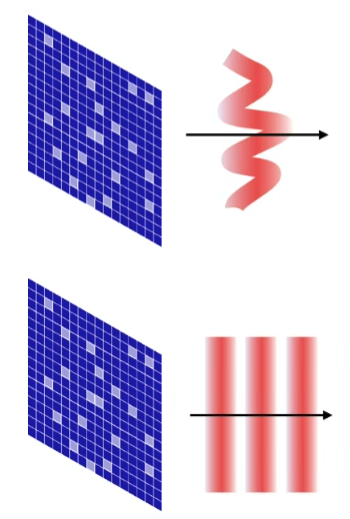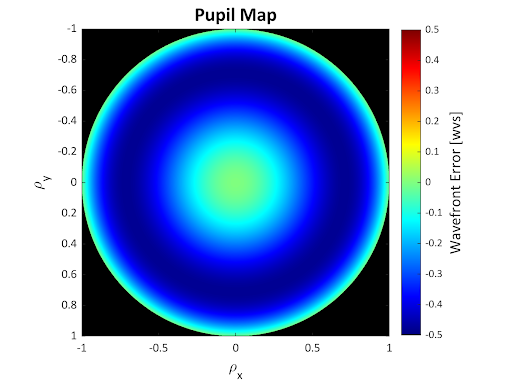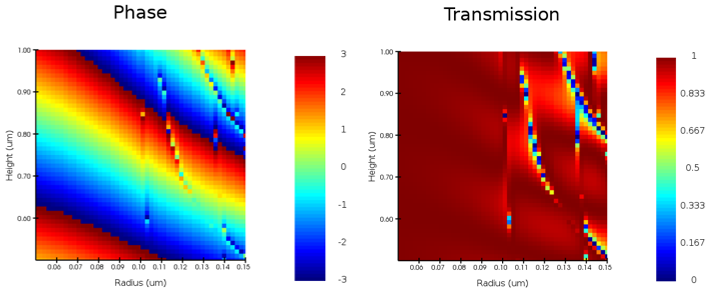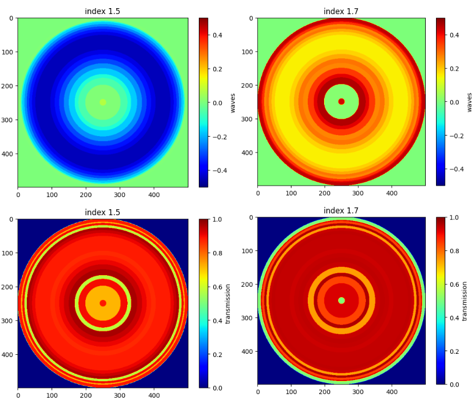Team Members
- Edith Koo
- Mingzhe Han
- Ping Sun
- Zhengyang Zhang
Customer
Ali Basiri & Luke Potter
Faculty Advisor
Michele Cotrufo
Abstract
The envisioned product is a cutting-edge optical correction system leveraging actively tunable metasurfaces. Designed specifically for the Yield Star (YS) sensor, our objective is to design a hybrid system consisting of an afocal relay and an active metasurface to mitigate aberrations in the YS system. Since these aberrations compromise measurement reliability, we implement metasurfaces with sub-wavelength cells and an actively tunable medium such as liquid crystals. By individually tuning each metasurface superpixel using applied gate voltage, we can achieve the desired wavefront correction. The ultimate goal is to elevate the standard of optical metrology within the chipmaking industry, ensuring that wafer KPI measurements are executed with unparalleled precision, consistency, and reliability.

Optical Design
A beam expander and image relay are designed for a HeNe laser (633 nm). The beam is initially magnified by 20X while the metasurface is then placed at the pupil plane at the end of the beam expander. A spatial filter may also be located at the internal focus point for effective clean-up of the beam. It will then be relayed using another afocal telescope before the laser beam is imaged onto the SHWS.

A Keplerian Telescope design, which has an intermediate focus, is utilized for the design due to low laser power. Using off-the-shelf optics, focal lengths of 4 mm and 80 mm are selected for the objective and eyepiece respectively. The image relay is based on a 4f optical system. Thus, the second lens of the beam expander is replicated for the image relay. It contains a magnification of 1X. The test stand withstands 0.142 waves of optical aberrations.

Using the Zernike Coefficients exported from CodeV, the pupil can be reconstructed in MATLAB before importing it into Lumerical for the metasurface design. A list of Fringe Zernike Polynomial expressions as used in CodeV is provided below. The set contains a maximum of 37 terms. An arbitrary pupil can be defined in which the total phase is plotted below. In our system, it contains different orders of spherical aberration and defocus.

Metasurface Design
Before full-scale metasurface simulation, a single meta-atom is simulated. The objective of this step is to sweep between the height and radius of the meta-cylinder to find a suitable and manufacturable height along with its corresponding radius range. The target phase change desired is 2π while the transmission should be as high and constant as possible. Ultimately, a TiO2 cylindrical nanorod meeting the criteria is created on a SiO2 substrate. As the nanostructure height is crucial for manufacturability, a height of 0.65 μm is selected. The height-to-width ratio is also maintained within a 3:1 to 10:1 ratio.

The reconstructed pupil map mentioned previously dictates the amount of phase change needed at any point on the pupil while the period of the meta-elements determines the location of each meta-element. The radius of the meta-atoms is selected based on the phase change required and is close to that of the phase map. With the system being dominated by spherical aberration, the design is assumed to be rotationally symmetric. Due to hardware limitations in simulating the full-scale metasurface (10×10 mm), data points were sampled for the given radius and then recreated for the entire metasurface. The output matches the desired wavefront and successfully corrects existing aberrations. With the liquid crystals and an index of 1.7, the phase profile changes while the transmission remains high.

Conclusion
We have designed an optical system that induces 0.1-0.7 waves of aberrations and an active metasurface that corrects the wavefront error at the desired wavelength. Using the reconstructed phase profile, simulations in Lumerical/Tidy3D modeling the meta-atom and larger-scale metasurface deliver the required wavefront correction with a transmission > 70%.
Acknowledgments
Thank you to our customers Ali Basiri and Luke Potter at ASML, our faculty advisor Michele Cotrufo, and the Institute of Optics for their support and guidance throughout the project.
References
Chu, Cheng Hung, et al. “Active Dielectric Metasurface Based on Phase‐change Medium.” Laser & Photonics Reviews, vol. 10, no. 6, Wiley, Oct. 2016, pp. 986–94.
Liquid-crystal-tunable metasurface antennas. (2017, March 1). IEEE Conference Publication | IEEE Xplore.
Shi-Qiang Li et al., Phase-only transmissive spatial light modulator based on tunable dielectric metasurface.Science364,1087-1090(2019).
